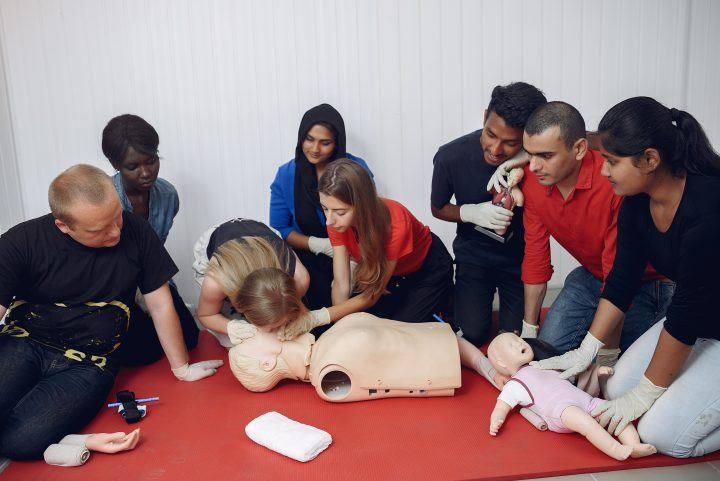Cardiac arrest can strike anyone, anytime, anywhere. That’s why knowing CPR (Cardiopulmonary Resuscitation) and how to use an AED (Automated External Defibrillator) is so important. But thanks to movies, TV shows, and misinformation, a lot of myths still surround CPR and defibrillator use. Let’s set the record straight. 👇
🧠 Myth #1: “If I do CPR wrong, I could hurt someone.”
Truth: You might crack a rib, but that’s okay—it means you’re pushing hard enough. It’s far better than doing nothing.
✅ Correct chest compressions can double or triple survival chances.
❌ Not acting is far more harmful than imperfect CPR.
⚡ Myth #2: “AEDs are only for professionals.”
Truth: AEDs are designed to be used by anyone, even with no medical training.
🔊 They give clear voice and visual instructions that guide you step-by-step.
🖱️ Many AEDs won’t even deliver a shock unless it’s absolutely needed—they’re smart and safe.
❤️ Myth #3: “You should only do CPR if you’re certified.”
Truth: Good Samaritan Laws in most places protect bystanders who try to help in good faith.
👐 Hands-only CPR (just compressions) is encouraged if you’re untrained.
👉 Don’t wait for EMS—every second counts in cardiac arrest.
🚫 Myth #4: “A person has to be flatlined for an AED to work.”
Truth: AEDs are used for specific rhythms like ventricular fibrillation (VF) or pulseless ventricular tachycardia (VT)—not flatline.
🧾 If the person is flatlined (asystole), AEDs won’t shock, but CPR is still critical until help arrives.
⚡ Myth #5: “You can restart a heart like in the movies—with one big shock.”
Truth: Real-life resuscitation is much more complex.
🎬 Hollywood often shows dramatic recoveries with one jolt—not how it works.
📉 Most cases need multiple rounds of CPR + defibrillation + advanced care.
💧 Myth #6: “You can’t use an AED in the rain or on a wet person.”
Truth: AEDs are safe to use outdoors, even in the rain.
💦 Just dry the chest area where the pads go—remove wet clothing if needed.
✅ Stand clear, and let the AED do its job.
🏥 Myth #7: “If emergency services are on the way, I don’t need to start CPR.”
Truth: Brain damage can begin within 4–6 minutes of cardiac arrest.
🚑 Even the fastest EMS response can take 6–10 minutes.
🕐 That time matters—your CPR can keep the brain alive until help arrives.
👶 Myth #8: “AEDs can’t be used on children.”
Truth: Many AEDs have pediatric pads or a child switch for use on kids under 8.
👶 In an emergency, if no pediatric pads are available, it’s okay to use adult pads on children.
📣 The Bottom Line
You don’t need to be perfect to save a life.
You just need to act. 👏
✅ Start CPR
✅ Use an AED if available
✅ Call for help
✅ Don’t wait—you could be the reason someone survives
Want to feel more confident in emergencies?
Consider taking a BLS or CPR/AED certification course. It’s fast, empowering, and could save a life.


